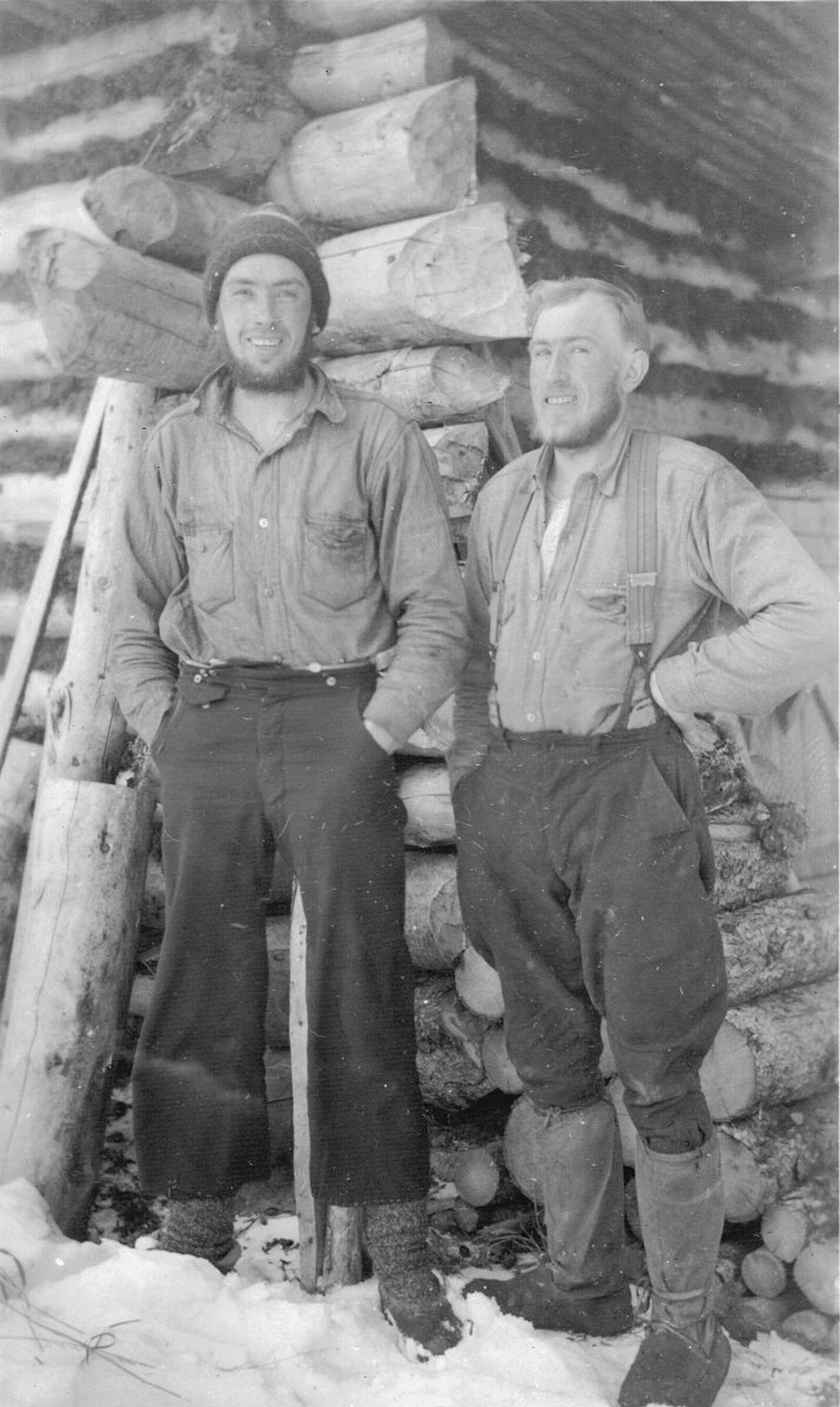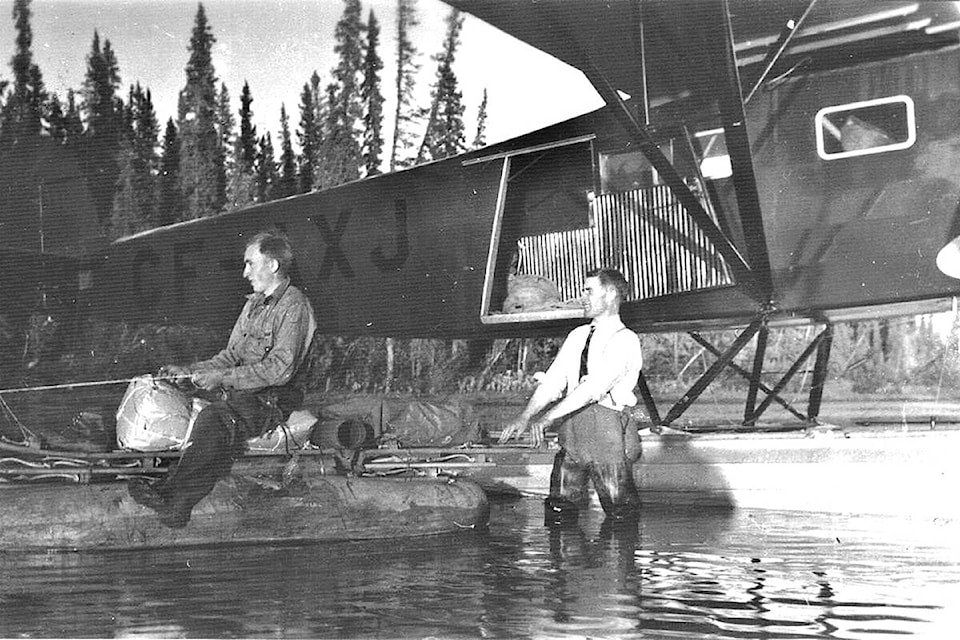There are two events that more than any other defined the growth and colonization of the Yukon: The Klondike gold rush, and the construction of the Alaska Highway. Both have been well documented in a mountain of books, and articles. The period that started with the onset of the First World War, and ending with the beginning of the Second World War was quite the opposite.
The population had declined dramatically, as had the economy. Historians Ken Coates and William Morrison referred to this period as “The Lean Years.” The new book, “Yukon Wanderlust,” by Don Barz goes a long way to addressing this deficiency and filling in the gaps in the latter part of “the lean years.”
The book tells of the Yukon exploits of the author’s father, Erwin “Ernie” Barz and uncle Art Barz, spanning the years between 1937 and 1942. The Barz brothers were two young men of German-Canadian ancestry who decided to come to the territory during the later years of the Great Depression to find jobs. They planned to work and save the money necessary to buy a farm back in British Columbia.
The account is thoroughly documented through interviews with the Barz brothers, diaries, archival and library research and newspaper accounts. All of these are tied together using the impressive collection of photographs that they took during their five-year stay in the north.
The Barz photo collection can now be found in the Yukon Archives. A finding aid describing the content of this collection can be accessed by going to the Yukon Archives online at http://yukon.minisisinc.com/ and searching the descriptive database for Barz.
When the Gold Reserve Act was passed by U.S. president, Franklin Roosevelt in 1934, the price of gold and silver increased, giving a boost to the Yukon’s mining industry. The brothers made their way to Dawson in the early spring of 1937, where they hoped to find work with the Yukon Consolidated Gold Corporation (YCGC). More robust Swedes were being hired in preference to the young brothers, but when many of these full-bodied specimens threw in the towel, the Barz boys were taken on. They worked for the summer on the company’s ground thawing operations in the goldfields near Dawson, and were rehired the following year.
By then, they had set their sites on something more enticing: they became trappers. It was fascinating to read how they adapted to a harsh northern environment, and navigated the social and natural circumstances that challenged them. Deceiving authorities about their actual activities until they met the two-year residency provisions, they set up shop in the Bonnet Plume River area and continued to trap and trade there until they returned to British Columbia in 1942 with enough money to buy a farm.

This book is not merely a descriptive account of their time in the north, it is also rich with contextual detail of the places, conditions and people. Camp life working for YCGC is described, as are aviation, trapping and trading dog mushing, hunting and fishing, and wood cutting in a remote area. Air transportation provided the vital link to supply their trapping, in fact making it possible for them to operate in an isolated region of the territory.
Author Barz provides excellent detail of the newborn aviation industry in the Yukon used by the brothers to ship their supplies to the Bonnetplume area. He profiles the prominent pilots, and the tragic details of some of the fatal crashes that took place in the early days. One of these was the death of their trading partner and provisioner, Ernest, Chappie Chapman, who was killed when the plane that was flying him to the Barz camp on Chappie Lake, crashed during take-off in January 1941. When the plane did not arrive (the brothers did not know of the tragic accident) and supplies ran short, the brothers made a mid-winter dash for Mayo to reprovision.
Throughout this account are profiles of the various people with whom the brothers interacted, including Chapman, pilot Everett Wasson, partner Henry Schmidt, and others, including Robert Martin, John Semple and Peter Henry.
The author describes the strenuous efforts of the Yukon administrations to prosecute anybody who defied the strict regulations set up to discourage short term settlers. Also included was the attempt by the Mounted Police to solve the mysterious disappearance of Aaron Knorr and Julia Bonnetplume, who were prospecting in the region in the years before the Barz brothers arrived.
Author Barz explores the social and physical context throughout the book. Descriptions of the places they visited and the events they witnessed (often with their camera) are detailed and add depth to the narrative. It is interesting to learn that they were taking photographs, processing the negatives, and printing the images in the log cabin they built themselves at their remote Margaret Lake camp.
Barz has done a lot more than tell us the story of his family’s Yukon adventure. He has clearly delineated the time and places that they visited while in the north. In his introduction, he states: “The purpose of this book is to take the reader back to that vanished pre-World War Two era in the Yukon of Art and Ernie photos and stories, and to do so as accurately as possible.” In this he succeeds.
Barz makes considerable effort to weigh the sources of information, evaluating them for accuracy and consistency, separating fact from fiction.
Sifting carefully through other sources of information, he clarifies dates and events from other published sources that are often confused or misleading. It is truly a pleasure to see the effort he has made to reveal the history.
Sadly, it was the aviation that supplied their provisions and made it possible to pursue their trapping that ultimately led to their return to British Columbia. When the Alcan Highway and CANOL projects started after the Japanese bombed Pearl Harbor, the American military redirected most of the local aircraft for their own needs, making it impossible for the young trappers to continue.
I can recommend the book Yukon Wanderlust as a definite must read for anybody who wants to get a sense of what life was like during the “lean years,” at least for two remarkable young men who proved themselves in the Yukon wilderness.
Yukon Wanderlust is 339 pages, including table of contents, and index. It has 381 footnotes, 199 illustrations and four maps, and is published by Celticfrog Publishing.
Michael Gates is Yukon’s first Story Laureate. He is the author of six books on Yukon history. His latest, “Dublin Gulch: A History of the Eagle Gold Mine,” received the Axiom Business Book Award silver medal for corporate history. You can contact him at msgates@northwestel.net.
